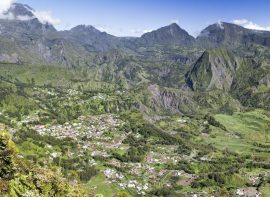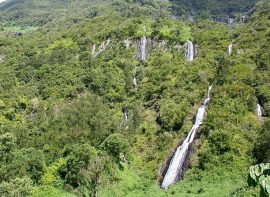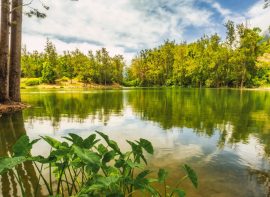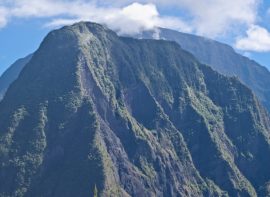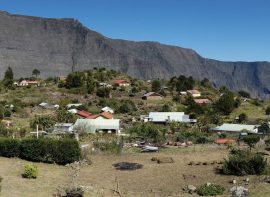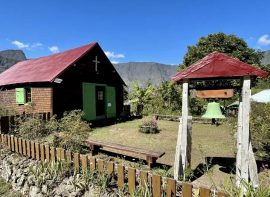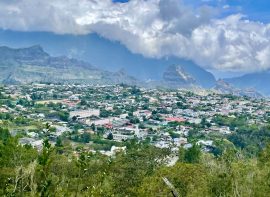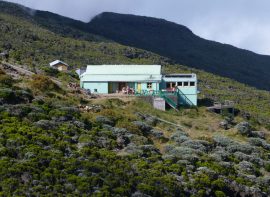
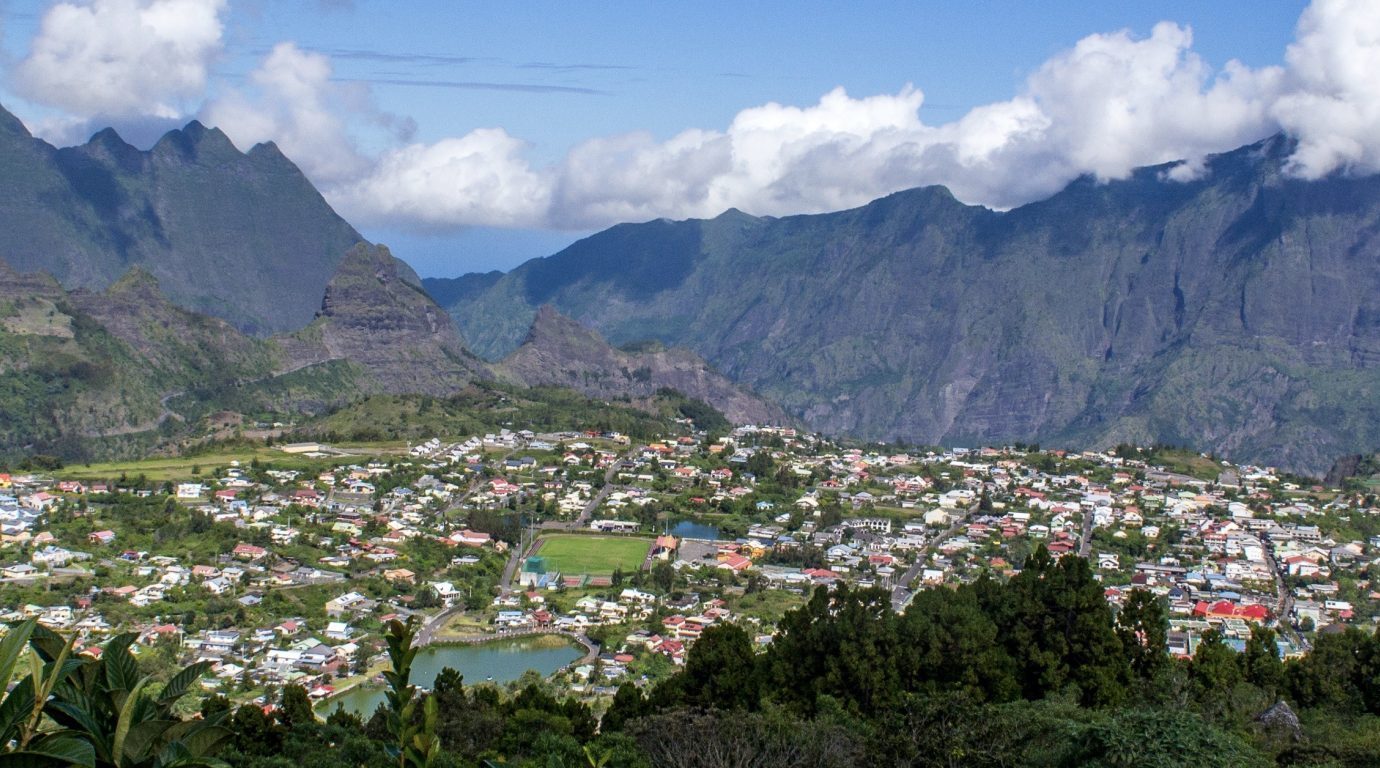
Cilaos is one of La Réunion’s three cirques, along with Mafate and Salazie, and is surrounded by two giants: Piton de La Fournaise, the highest peak in the Indian Ocean at 3,070 meters, Gros Morne (3,019 meters) and Grand Bénare (2,898 meters). It was created 500,000 years ago, when the Piton des Neiges collapsed.
The cirque de Cilaos is part of the heart of the National Park of La Réunion, a UNESCO World Heritage site. The cirque is surrounded by steep, vertiginous ramparts almost 1,000 meters high, and within the cirque, canyons, deep ravines and pitons form a spectacular landscape. The cirque was opened up with the construction of the road in 1932. From then on, it was renowned for its thermal baths. Today, it remains a vacation and tourism destination with unique assets in terms of its natural wealth, traditions and atypical character. It is the most densely populated of the three cirques, with almost 6,000 inhabitants.
History
Like the other two cirques, Cilaos was a refuge for runaway slaves known as the “Black Maroons”. They were the first inhabitants.
The word Cilaos is said to come from the Malagasy word Tsilaosa, meaning “that one does not abandon”. However, according to some historians, the word Cilaos has its origins in the name of a Malagasy slave named “Tsilaos”, who took refuge in the circus. Having escaped from their masters, the maroons took advantage of the site’s difficult access to live in complete freedom in the middle of nature.
Some of these slaves settled at Ilet à Cordes, which owes its name to the fact that the maroon slaves hiding there could only access the plateau by ropes thrown from the top of the ramparts. But they were soon pursued by armed and organized “maroon hunters”. As they fled, many maroons were killed. Among these hunters was Mussard (one of Réunion’s best-known), who in October 1751 raided Ilet à Cordes, where he discovered two runaway slave camps. The expedition resulted in the death of three maroons and the capture of a booty consisting of three rifles, pitchforks, pruning hooks, cooking pots, pickaxes and iron spears.
After the tragic story of these first Maroon inhabitants, Cilaos remained uninhabited for some time. Official settlement dates back to 1850, but poor, landless “petits blancs” arrived as early as 1835. They developed self-subsistence farming (lentils, corn, wine, peas, beans, citrus fruits, livestock…). Even today, Cilaos is renowned for its lentils and wine.
The 400-curve road

The first access road to the circus was built in the mid-19th century. In those days, it took two long days by sedan chair to get there. The present road, known as the “road of 400 bends”, was opened to traffic in 1932. Subject to frequent landslides, it nevertheless offers breathtaking panoramas. The cirque de Cilaos is steep-sided, bordered by vertiginous ramparts and dominated by the island’s highest peaks. You have to wind your way from the bras de Cilaos, between vertiginous walls and deep ravines, and sometimes under the mountain, to finally reach the majestic cirque. The journey alone is worth the trip.
Cilaos lentils
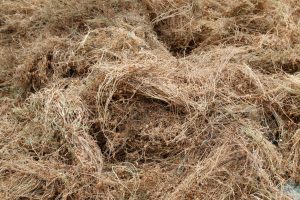
The Cilaos lentil is an endemic lentil grown in the cirque since the mid-19th century. During the harvest, planters used to perform the ballet of beating the lentils. This arduous task has gradually been replaced by industrial threshing machines, but 10% of the harvest is still done in the traditional way. Sown in April and harvested in September, Cilaos lentils, once prepared and simmered, have an exceptional taste. They are not only fine on the palate, but also a delightful accompaniment to a curry or sausage rougail.
Cilaos wine, the wine that drives you crazy at the Cilaos winery
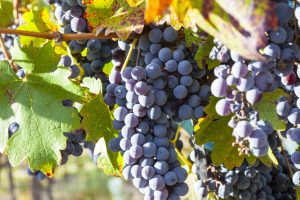
As soon as the island was discovered in 1642, the first arrivals brought vine stocks with them. But in 1868, the dreaded phylloxera fungus ravaged the vineyards of mainland France. The local authorities prohibited the introduction of noble grape varieties, which were more susceptible to disease. Since then, Cilaos wine has been made from a robust but mediocre grape variety: Isabelle. Used more as an aperitif, it earned the unfortunate nickname of “wine that drives you crazy”. Contrary to this persistent legend, this wine does not, of course, make you crazy. The misunderstanding stems from an unfortunate mix-up with the “Noah” grape variety, whose high methanol content is toxic to the body, causing neurological damage.
From 1996 onwards, the Cilaos winery developed oenological research, the first vines were planted and in 2007 the first wine was produced. The winery was taken over in 2019 by Olivier and Véronique Cadarbacasse.
